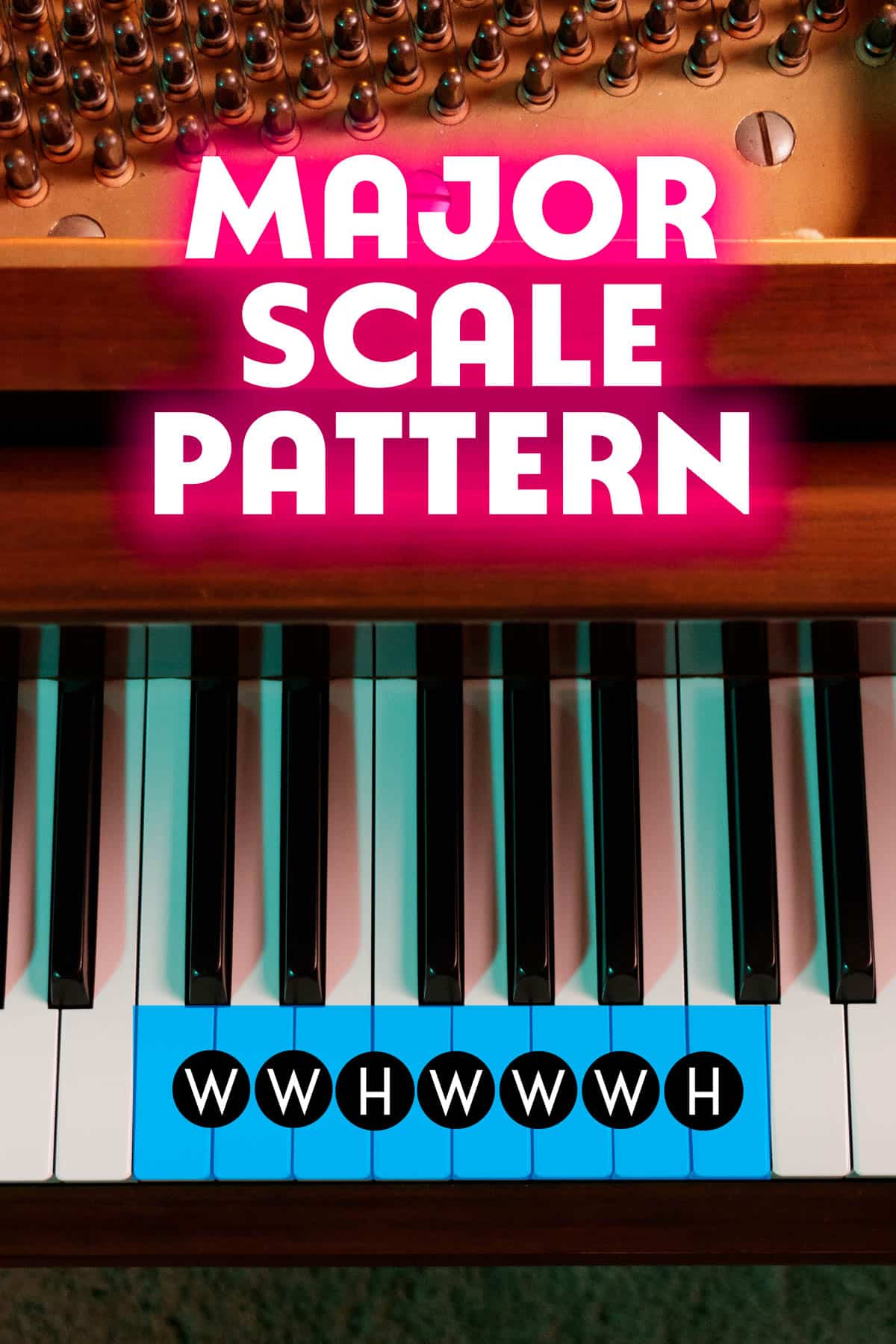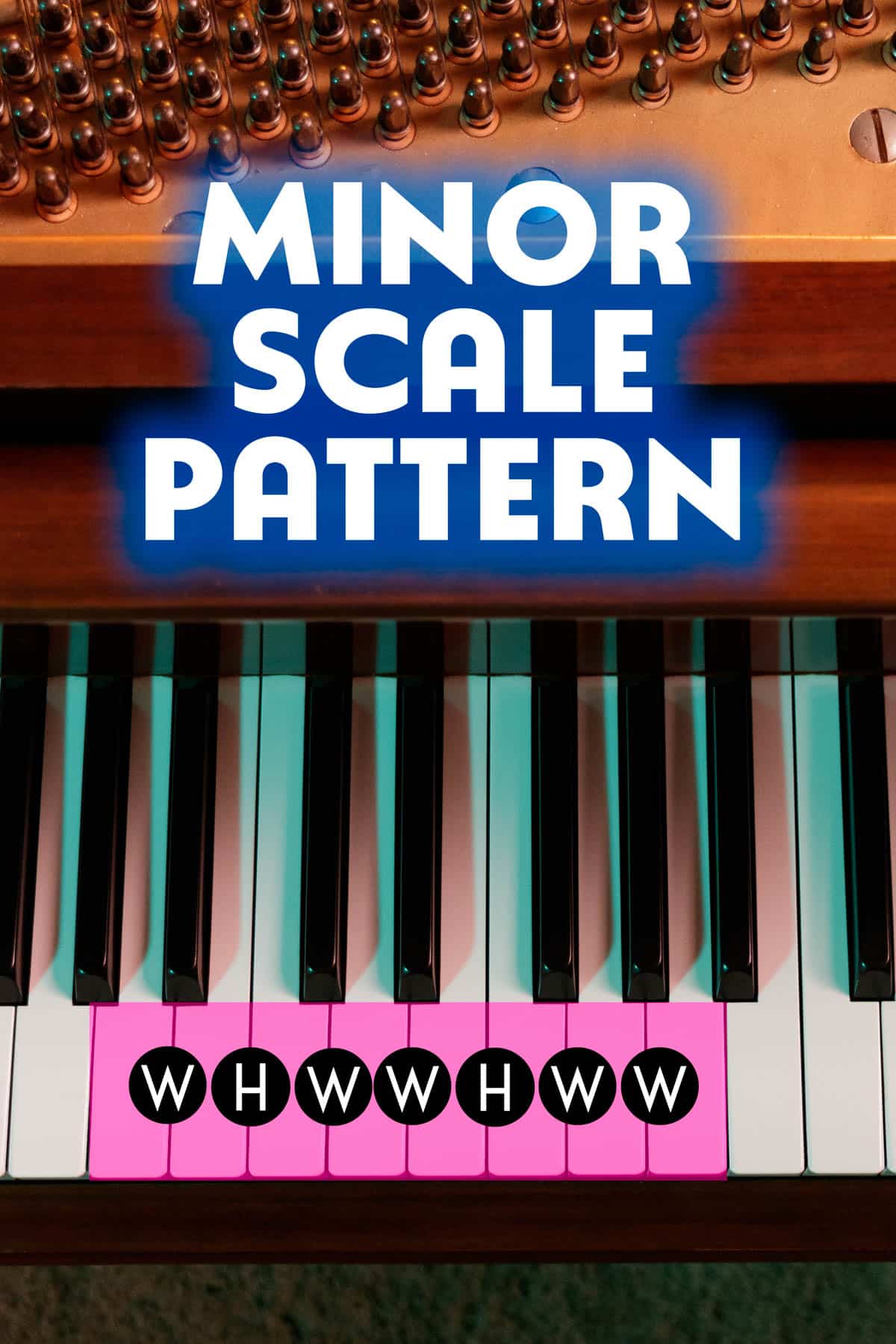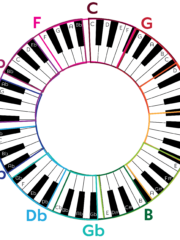Wondering what is the difference between major and minor scales? Why do they sound different, and how can you tell them apart? Let's learn all about how these two types of scales are constructed.
Tired of practicing scales or confused by them? Learn why scales are important to learn and how they'll improve your piano technique.

Jump to:
Want to practice major and minor scales? Pick up a scale book (affiliate) with the fingering written in to help you master these exercises.
Half & Whole Steps
Before we look at how major and minor scales are constructed, you need to know two simple units of measurement on the keyboard: half steps and whole steps.
A half step is the distance from one key to the very next one, such as a white key to the next black key or from a black key to the next white key.
A whole step is the distance from one white key to the next white key, or from one black key to the next black key.
Look a little closer and you’ll notice that B and C and E and F don’t have a black note between them. This means that the distance from B to C and E and F is a half step, not a whole step.
Major Scales

Now, let’s look at the formula for a major scale. Pick any note to start. Play 2 whole steps, a half step, 3 more whole steps, and another half step to make a major scale.
To summarize, the formula for a major scale is W, W, H, W, W, W, H.
What I love about major scales are their bright, positive tone. Songs played in major keys generally feel happy—which is how you should feel after learning this fun formula!
To strengthen your fingers and improve your technique, learn all 12 of the major scales. Use a scale book (affiliate) to help you, as it will show you the correct fingering along with the chords and arpeggios.
Minor Scales

As you’d expect, the formula for a minor scale is a little bit different. Choose any note, then play 1 whole step, a half step, 2 whole steps, another half step, then 2 more whole steps.
That makes the formula for a minor scale W, H, W, W, H, W, W.
Minor keys sound very different from major keys, and will make a song sound melancholy, pensive, or serious.
To strengthen your fingers and improve your technique, learn all 12 of the minor scales, making sure to practice all three variations (natural, harmonic, and melodic minor). Use a scale book (affiliate) to help you, as it will show you the correct fingering along with the chords and arpeggios.
Relative Minor

There’s something else you need to know! There’s a fascinating connection between major and minor. Each major key has a cousin in the minors called the relative minor.
If you want to find the relative minor, start on the first note of the major key, which is called the tonic note. Count down three half steps (also called a minor third) to find the relative minor. For example, C major’s relative minor is A minor.
You can also count up a sixth from the tonic to find the relative minor, but I like using the minor third method since it's easier to do mentally.
FAQs
First, listen to the tone. Is it happy or sad? Happy sounding keys are major, while sad ones are minor.
Also, notice the sharps or flats in the key signature. Each major key has a relative minor, so there can be two possibilities (one major, one minor) for each key signature. Memorize how many sharps or flats are in each major and minor key, and you'll be able to quickly identify which one it is.
In addition, harmonic minor keys will have the 7th note raised a semitone, and melodic minor keys will have the 6th and 7th notes raised a semitone.
Major and minor scales are used in every single piece you'll play. Even pieces written in major keys will use many minor chords in their harmonies. Knowing the difference between these two types of scales will help you learn pieces faster and understand the chords a lot better.
Minor scales are built with a formula of half and whole steps as follows: W, H, W, W, H, W, W. Major scales are built with a formula of half and whole steps like this: W, W, H, W, W, W, H. Basically, they're built from a different sequence of half and whole steps, which changes the sound of the scale.
Major usually sounds happy or fun, while minor often sounds sad or serious. Chords from major keys typically have a dominant, complete sound to them, while chords from minor keys often sound more dissonant and interesting.
Conclusion

The differences between major and minor scales boil down to their patterns of half and whole steps. Once you understand how major and minor scales are constructed, it's easy to tell them apart. Isn’t it fascinating how a small difference in the pattern changes the sound of these scales completely?
Using these formulas of half and whole steps, you can start on any note—black or white—and build your own major or minor scale.
If you keep exploring, you’ll realize that there’s twelve major keys and twelve minor keys. Have fun experimenting and learning these exciting keys!
Video
Want to watch about the differences between major and minor scales instead? Check out this fun video!
Other Piano Articles You'll Enjoy
You must use the category slug, not a URL, in the category field.Follow Emma Blair Piano on Pinterest, Instagram, Facebook, Twitter, and YouTube!
If you enjoyed this post or found it helpful, please leave a comment below. You'll make my day!




Bango
Thanks for the happy, cheerful, and informative presentation.
Bango
Emma
You're very welcome!
Richard Broadbent
Excellent, elegantly put
Debbie
I enjoyed reading this article on the difference between major and minor scales.
Did I miss the first week of class, so to speak? It felt like it when unidentified terms appeared, such as appregios, and "three variations (natural, harmonic and melodic)". I will look them up. I have bookmarked your page for more knowledge and will probably order the scales book through your affiliate.
Thank you for putting so much time and energy into this well taught article. Looking forward to reading the rest of them.
Emma
You're welcome, Debbie! I'm glad this was helpful for you!